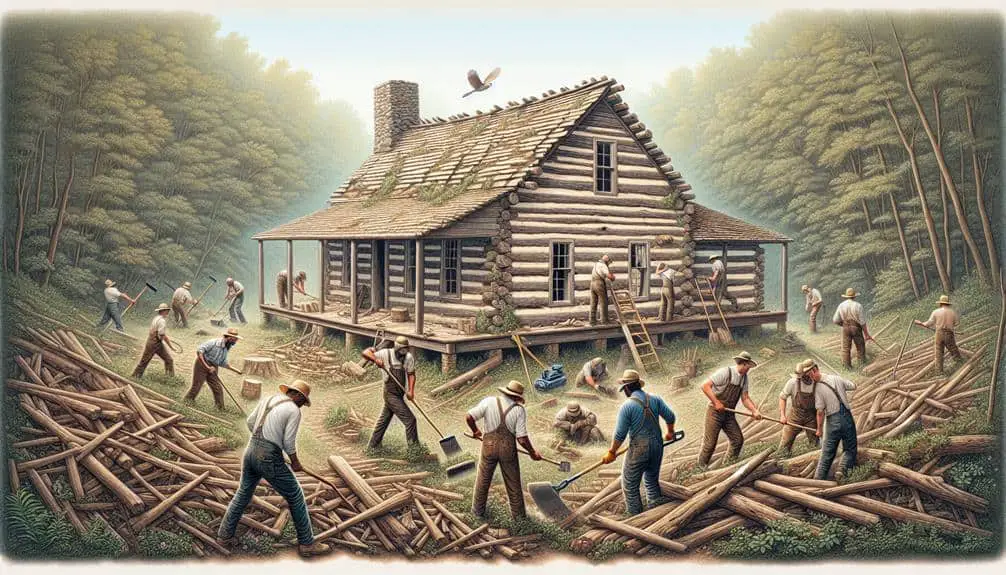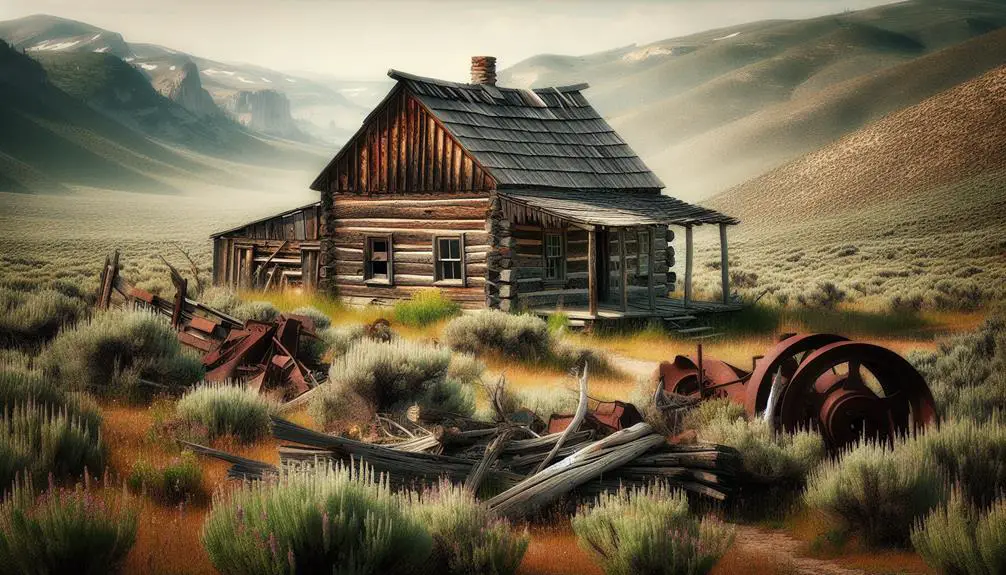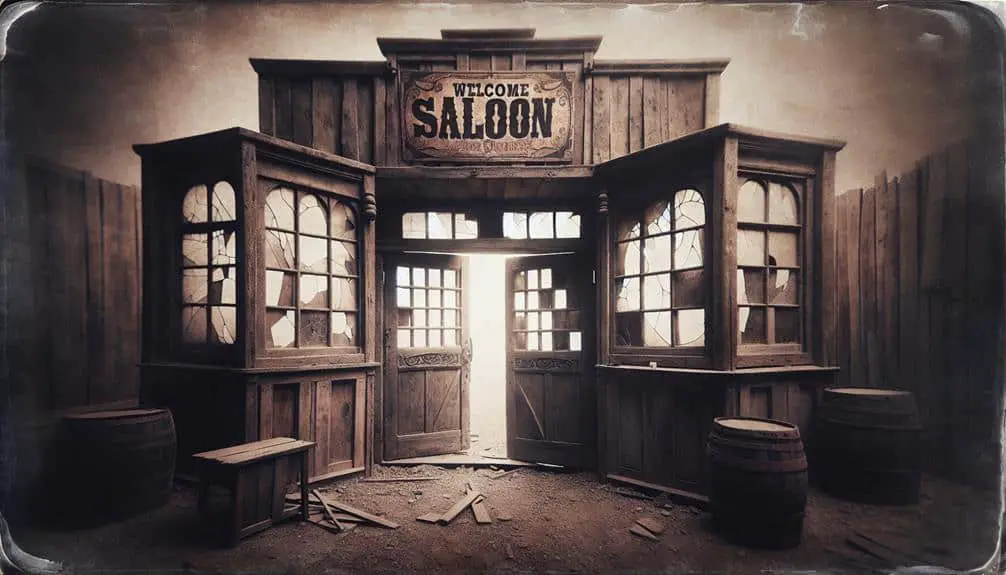To safeguard lost frontier settlements, begin by researching historical records and archaeological evidence. Identify artifacts and map out settlement locations. Explore the settlers' daily lives through objects and stories. Work together with local authorities to access resources and develop preservation strategies. Engage the community by raising awareness and fostering pride in heritage. Further steps and detailed insights await for you to guarantee the successful conservation of these historical sites.
Key Points
- Conduct thorough research using historical records, maps, and archaeological surveys.
- Explore artifacts and structures to uncover clues about lost settlements.
- Collaborate with local authorities for heritage conservation.
- Implement preservation strategies tailored to each site's historical significance.
- Engage the community through awareness campaigns and volunteer involvement.
Identifying Lost Frontier Settlements
To efficiently identify lost frontier settlements, conduct thorough research utilizing historical records, maps, and archaeological surveys. Exploring archaeological evidence is vital in uncovering clues about these settlements. By examining artifacts, structures, and other remnants, you can piece together the history of these lost communities. Mapping geographic locations plays a significant role in understanding where these settlements were situated and how they interacted with the surrounding landscape.
When delving into historical records, pay close attention to any mentions of frontier settlements that may have been forgotten over time. Look for references to specific names, events, or locations that could lead you to valuable information. Cross-referencing these records with maps can help pinpoint potential areas where these settlements once thrived. Archaeological surveys then allow you to physically explore these locations, uncovering tangible evidence that supports the existence of these lost frontier settlements.
Researching Historical Significance
How can you explore the historical importance of forgotten frontier settlements effectively? To investigate the significance of these lost communities, start by examining artifacts left behind and uncovering stories that provide insight into their past. Artifacts such as tools, household items, and documents can offer valuable clues about the daily lives and activities of the settlers. By carefully scrutinizing these objects, you can piece together a clearer picture of the challenges they faced and the innovations they developed.
Furthermore, uncovering stories from descendants or historical records can shed light on the social dynamics, cultural practices, and significant events that shaped these frontier settlements. Oral histories, diaries, and newspaper archives are all valuable resources in this research process. By gathering and analyzing these narratives, you can gain a deeper understanding of the community's impact on the region and its place in history.
Collaborating With Local Authorities
Collaborate effectively with local authorities to enhance your research on forgotten frontier settlements. Building strong local partnerships is important for successful heritage conservation initiatives. Local authorities often hold valuable historical records, maps, and insights that can greatly enrich your understanding of these settlements. By working closely with them, you can gain access to resources that may not be publicly available, such as archives, oral histories, and expertise on local customs and traditions.
Establishing these collaborations can also lead to a more thorough preservation strategy. Local authorities may offer support in obtaining necessary permits, funding opportunities, or even physical assistance in maintaining and protecting the historical sites. Additionally, involving the community through these partnerships can foster a sense of ownership and pride in their heritage, leading to increased participation and support for conservation efforts.
Implementing Preservation Strategies
When implementing preservation strategies for lost frontier settlements, contemplate the unique historical significance and architectural features of each site to guide your conservation efforts effectively. Community involvement plays an essential role in the successful preservation of these settlements. Engaging with local residents, historians, and stakeholders can provide valuable insights, resources, and support for your preservation initiatives. By fostering a sense of community ownership and pride in these historical sites, you can guarantee long-term sustainability and protection against neglect or development threats.
Funding sources are another critical aspect to ponder when implementing preservation strategies. Seek out grants, donations, sponsorships, and partnerships with organizations that share an interest in historical preservation. Developing a diverse funding portfolio can help secure the financial resources needed to undertake preservation projects, conduct research, and maintain the integrity of frontier settlements over time.
Engaging the Community for Support
To garner support for preserving lost frontier settlements, actively involve the local community in your conservation efforts. Community involvement is essential for successful preservation initiatives. Engaging the community not only raises awareness about the historical significance of these settlements but also fosters a sense of ownership and pride among residents.
To kickstart community involvement, organize town hall meetings, workshops, and informational sessions to educate locals about the importance of preserving these sites. Encourage community members to volunteer their time and expertise in various preservation activities such as archaeological digs, site clean-ups, and historical reenactments.
Fundraising initiatives are another effective way to engage the community and secure financial support for preservation projects. Consider organizing events like heritage festivals, charity auctions, or crowdfunding campaigns to raise funds for maintenance, restoration, and research efforts. Collaborating with local businesses, historical societies, and government agencies can also help broaden your fundraising reach and garner additional support for preserving lost frontier settlements.
Frequently Asked Questions
How Can Modern Technology, Such as Drones or Ground-Penetrating Radar, Be Used to Help Locate Lost Frontier Settlements?
To locate lost frontier settlements, modern technology like drones or ground-penetrating radar can be pivotal. Aerial surveys and remote sensing aid in initial identification, while geospatial mapping guides excavation techniques for a thorough exploration of historical sites.
Are There Any Legal Considerations or Restrictions When It Comes to Preserving and Protecting Lost Frontier Settlements on Private Property?
When it comes to preserving lost frontier settlements on private property, legal considerations like property rights play an essential role. Understanding these rights, restrictions, and potential legal obligations is vital for successfully managing the preservation process effectively.
What Steps Can Be Taken to Ensure the Long-Term Sustainability and Maintenance of Preserved Frontier Settlements?
To guarantee the long-term sustainability and maintenance of preserved frontier settlements, you must prioritize community engagement. Emphasize the historical significance of these sites to garner support and resources for continued preservation efforts. Your involvement is vital.
How Can Archaeological Methods and Techniques Be Incorporated Into the Preservation Process of Lost Frontier Settlements?
To incorporate archaeological methods into preserving lost frontier settlements, utilize excavation techniques to uncover historical artifacts. Implement conservation strategies to protect and maintain these findings, ensuring the long-term sustainability of the settlement's historical significance.
Are There Any Potential Risks or Challenges Associated With Public Access to Preserved Frontier Settlements, Such as Vandalism or Looting?
When it comes to preserving frontier settlements, public access brings risks like vandalism and looting. Engage the community to aid in vandalism prevention. Foster a sense of ownership to protect these historical sites for future generations.



